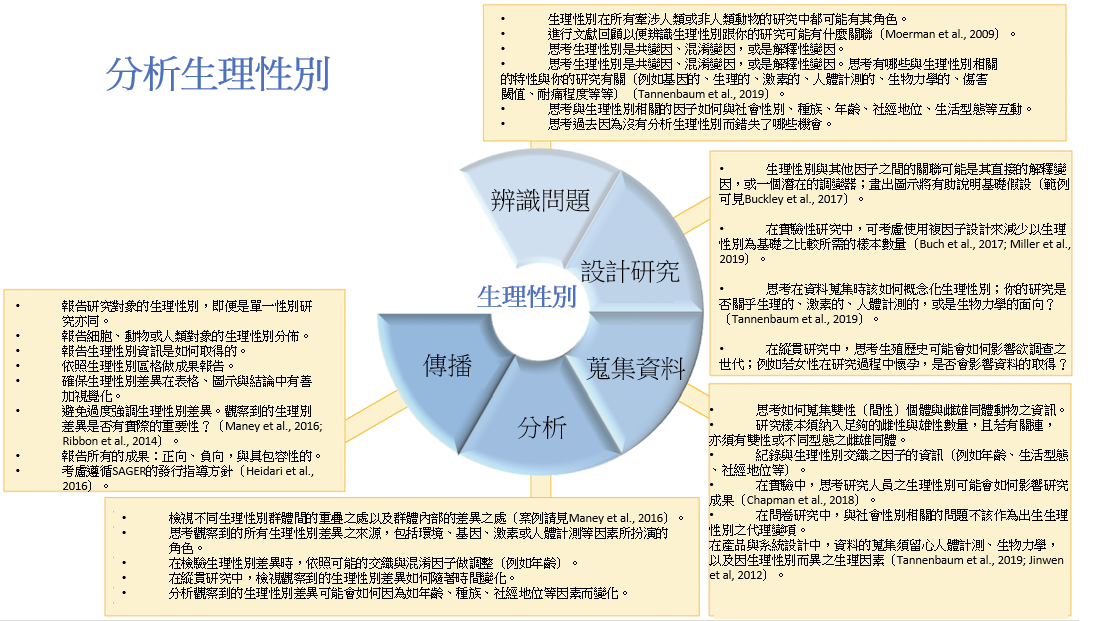參考資料
Buch, T. et al. (2019). Benefits of a factorial design focusing on inclusion of female and male animals in one experiment. J. Mol. Med. 97, 871–877.
Buckley, J. P., Doherty, B. T., Keil, A. P., & Engel, S. M. (2017). Statistical approaches for estimating sex-specific effects in endocrine disruptors research. Environmental health perspectives, 125(6), 067013.
Chapman, C. D., Benedict, C., & Schiöth, H. B. (2018). Experimenter gender and replicability in science. Science advances, 4(1), e1701427.
Jingwen, H. U., Rupp, J. D., & Reed, M. P. (2012). Focusing on vulnerable populations in crashes: recent advances in finite element human models for injury biomechanics research. J. Automot. Saf. Energy, 3, 295-307.
Maney, D. L. (2016). Perils and pitfalls of reporting sex differences. Philosophical Transactions of the Royal Society B: Biological Sciences, 371(1688), 20150119.
Miller, L. R. et al. (2017). Considering sex as a biological variable in preclinical research. FASEB J. 31, 29–34
Moerman, C., Deurenberg, R., & Haafkens, J. (2009). Locating sex-specific evidence on clinical questions in MEDLINE: a search filter for use on OvidSP. BioMed Central Medicine Medical Research Methodology, 9(1), 25.
Rippon, G., Jordan-Young, R., Kaiser, A., & Fine, C. (2014). Recommendations for sex/gender neuroimaging research: key principles and implications for research design, analysis, and interpretation. Frontiers in human neuroscience, 8, 650.
